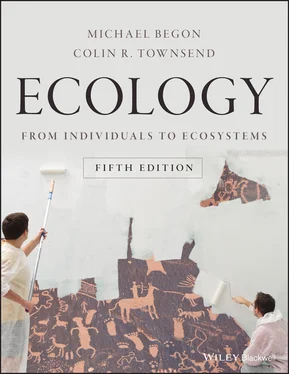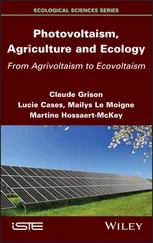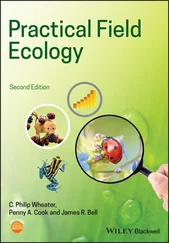Hawaii provides another remarkable example of a historical process that depends on the movement of a tectonic plate, but in this case in relation to volcanism and in a restricted geographic area. The Hawaiian chain of islands is volcanic in origin, having been formed gradually over the last 40 million years, as the centre of the Pacific tectonic plate moved steadily over a volcanic ‘hot spot’ in a south‐easterly direction. Thus, Niihau and Kauai are the most ancient of the islands, and Hawaii itself the most recent.
Hawaiian Drosophila
The Drosophila ‘fruit‐flies’ of Hawaii provide an especially spectacular example of species formation and endemism on islands. There are several thousand species of Drosophila worldwide (not all named yet) of which up to 1000 are found only in the Hawaiian Islands (Kang et al ., 2016). Of particular interest are the 120 or so endemic species of ‘picture‐winged’ Drosophila , very few of which occur on more than one island. The majority of the picture‐winged species are specialised to oviposit and develop in the decaying bark of native trees in particular families. The lineages through which these species have evolved can be traced by analysing their DNA sequences, in this case using five nuclear genes with a total of 4260 nucleotides, to produce a comprehensive phylogeny of 93 of the species (Magnacca & Price, 2015). The evolutionary tree that emerges is shown in Figure 1.16, with each estimated species divergence date lined up alongside the island on which it occurred.

Figure 1.16 An evolutionary tree linking 93 species of picture‐winged Drosophila on the Hawaiian Islands,traced by the analysis of DNA sequences on five nuclear genes, with species groups indicated. The shaded areas denote the time periods when the labelled island was the youngest available for colonisation. Species’ divergence dates are lined up against the island on which they occurred. The islands of Maui, Molokai and Lanai are grouped together because they were recently linked by a land bridge. The earliest split (with separation of the adiastola group) occurred prior to the emergence of the mature Kauai, with subsequent splits into the other three species groups occurring on the ancient Kauai, and later dispersal to the younger islands as these emerged and matured. Speciation often involved specialisation on particular host plant families, indicated by different colours in the tree (‘sap flux’ is fermenting sap as it oozes from trees; ‘minor hosts’ are individual plant species, not in the families in the list, and used by only one or two species).
Source : From Magnacca & Price (2015).
The standard view for the biogeographic evolution of Hawaiian taxa is a ‘progression‐rule pattern’, with the most basal species occurring on ancient Kauai and each lineage dispersing to younger islands as these emerged and matured to a deeply eroded topography with forests and well‐developed soils. Historical elements in ‘what lives where’ are plainly apparent for many of the species groups in the figure. The earliest split within the picture‐wing clade occurred prior to the emergence of the mature Kauai, with separation of the basal adiastola group ( Figure 1.16). The figure also shows that the basal species of the picticornis , planitibia and grimshawi groups are found on the ancient island of Kauai, with these groups separating 3.8–4.7 million years ago (mya). A second stage of diversification can be seen when the grimshawi subgroups split at 2.1–3.1 mya on Oahu. The planitibia group provides a particularly clear example of progression‐rule dispersal, with a split into two lineages on Kauai, followed by a split into three lineages on Oahu and subsequent dispersal to the younger islands. But such clear patterns are not always discernible, particularly in the grimshawi group. As new islands have been formed, rare dispersers have reached them and eventually evolved into new species, usually by becoming specialised on particular host plants. The arrival on Oahu around 3 mya of new plants upon which grimshawi species specialise (including Charpentiera and Pisona spp.) may have triggered a burst of speciation in the group. At least some of the picture‐winged species appear to match the same environment as others on different islands. Of two closely related species, for example, D. adiastola is only found on Maui and D. setosimentum only on Hawaii, but the environments that they live in are apparently indistinguishable (Heed, 1968). What is most noteworthy, of course, is the power and importance of isolation (coupled with natural selection) in generating new species. Thus, this island biota illustrates two important, related points: (i) that there is a historical element in the match between organisms and environments; and (ii) that there is not just one perfect organism for each type of environment.
Climatic variations have occurred on shorter timescales than the movements of landmasses. Changes in climate during the Pleistocene ice ages, in particular, bear a lot of the responsibility for the present patterns of distribution of plants and animals. Techniques for analysing and dating biological remains (particularly buried pollen) increasingly allow us to detect just how much of the present distribution of organisms is a precise locally evolved match to present environments, and how much is a fingerprint of the hand of history. As climates have changed, species populations have advanced and retreated, been fragmented into isolated patches, and may then have rejoined. Much of what we see in the present distribution of species represents a phase in the recovery from past climatic change ( Figure 1.17).
the Pleistocene glacial cycles …
Techniques for the measurement of oxygen isotopes in ocean cores indicate that there may have been as many as 16 glacial cycles in the Pleistocene, each lasting for about 125 000 years ( Figure 1.17a). Each cold (glacial) phase may have lasted for as long as 50 000–100 000 years, with brief intervals of only 10 000–20 000 years when the temperatures rose to, or above, those of today. From this perspective, present floras and faunas are unusual, having developed at the warm end of one of a series of unusual catastrophic warm periods.

Figure 1.17 Contrasting changes in the distribution of spruce and oak species in relation to the waning of an ice age.(a) Estimates of temperature during glacial cycles over the past 400 000 years, obtained by comparing oxygen isotope ratios in fossils taken from ocean cores in the Caribbean. Periods as warm as the present have been rare events, and the climate during most of the past 400 000 years has been glacial. The dotted line represents the temperature 10 000 years ago at the beginning of the present period of warming (b) Ranges in eastern North America, as indicated by pollen percentages in sediments, of spruce species (above) and oak species (below) from 21 500 years ago to the present. Note how the ice sheet contracted during this period.
Source : (a) After Emiliani (1966) and Davis (1976). (b) After Davis & Shaw (2001).
During the 20 000 years since the peak of the last glaciation, global temperatures have risen by about 8°C. The analysis of buried pollen – particularly of woody species, which produce most of the pollen – can show how vegetation has changed ( Figure 1.17b). As the ice retreated, different forest species advanced in different ways and at different speeds. For some, like the spruce of eastern North America, there was displacement to new latitudes; for others, like the oaks, the picture was more one of expansion.
Читать дальше














